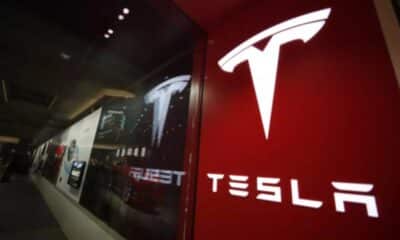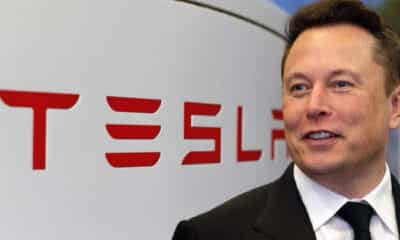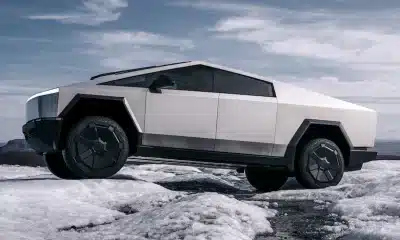Business
Questions About The Safety Of Tesla’s ‘Full Self-Driving’ System Are Growing In 2024

DETROIT — Three times in the last four months, William Stein, a technology analyst with Truist Securities, has accepted Elon Musk’s invitation to test the latest versions of Tesla’s lauded “Full Self-Driving” system.
According to the business, a Tesla equipped with the technology may go from one location to another with minimum human assistance. However, when Stein drove one of the cars, he claimed that the vehicle engaged in risky or illegal manoeuvres. Stein stated that his 16-year-old son, who accompanied him on the test drive earlier this month, was “terrified.”
Federal inspectors are investigating Stein’s experiences, as well as a Tesla crash in the Seattle region employing Full Self-Driving that killed a biker in April. They had previously been looking at Tesla’s automated driving technologies for almost two years, following scores of collisions that prompted safety concerns.
Questions About The Safety Of Tesla’s ‘Full Self-Driving’ System Are Growing
The issues have made many who monitor autonomous vehicles more skeptical that Tesla’s automatic system would ever be able to operate securely on a large scale. Stein believes Tesla is still waiting to launch a fleet of self-driving cars by next year, as Musk has predicted.
The newest mishaps occur at a critical juncture for Tesla. Musk has informed investors that Full Self-Driving may be able to operate more safely than human drivers by the end of this year, if not next.
In less than two months, the business plans to showcase a car designed specifically to be a robotaxi. Musk has stated that in order to deploy robot axis on the road, Tesla will have to demonstrate to regulators that the system can drive more safely than people. Under federal regulations, Teslas must meet national vehicle safety standards.
Musk has disclosed data on miles driven per crash, but only for Tesla’s less advanced Autopilot technology. According to safety experts, the data must be corrected since it only records catastrophic collisions involving airbag deployment and does not reveal how frequently human drivers had to take control to escape a collision.
Approximately 500,000 Tesla owners employ Full Self-Driving on public roads, accounting for slightly more than one in every five Teslas now in service. Most of them paid at least $8,000 for the optional system.
The business has stressed that automobiles outfitted with the system cannot drive autonomously and that drivers must always be prepared to intervene if necessary. Tesla also claims to watch each driver’s behavior and will suspend their ability to use Full Self-Driving if they do not properly supervise the system. Recently, the business began referring to the technology as “Full Self-Driving” (Supervised).
Musk, who has admitted that his previous estimates for the deployment of autonomous driving were overly optimistic, predicted a fleet of autonomous vehicles by the end of 2020. Five years later, many who follow the technology doubt it will function across the United States as promised.
Michael Brooks, executive director of the Centre for Auto Safety, stated, “It’s not even close, and it won’t be next year.”
Stein drove a Tesla Model 3, purchased at a Tesla dealership in Westchester County, north of New York City. Tesla’s lowest-priced vehicle was outfitted with the most recent Full Self-Driving software. According to Musk, the program now incorporates artificial intelligence to assist with steering and pedal control.
During his journey, Stein noted that the Tesla seemed smoother and more human-like than previous versions. However, in less than ten miles, he claimed the automobile made a left turn from a through lane while running a red light.
“That was stunning,” Stein said.
He explained that he did not take control of the automobile because there was little traffic, and the maneuver did not appear unsafe then. Later, the car drove along the middle of a parkway, straddling two lanes of traffic moving in the same direction. This time, Stein explained, he intervened.
Stein wrote to investors that the latest version of Full Self-Driving does not “solve autonomy” as Musk had expected. It does not “appear to approach robotaxi capabilities.” Stein reported that Tesla vehicles surprised him with dangerous maneuvers after two previous test drives in April and July.
Tesla has not replied to requests for comment.
Stein stated that, while he believes Tesla will eventually profit from its driving technology, he does not anticipate a robotaxi with no driver and a passenger in the back seat shortly. He projected that it would be considerably delayed or have restricted travel options.
According to Stein, there is frequently a considerable difference between what Musk says and what is likely to happen.
To be true, many Tesla devotees have shared videos on social media of their cars driving autonomously without human intervention. Videos, of course, do not demonstrate how the system functions over time. Others have shared recordings that depict harmful behavior.
Alain Kornhauser, head of autonomous vehicle studies at Princeton University, said he drove a Tesla borrowed from a friend for two weeks and discovered that it constantly recognized pedestrians and detected other drivers.
While it often performs well, Kornhauser said he had to take control when the Tesla made actions that terrified him. He advises that Full Self-Driving has yet availableto be alone in all locations.
“This thing,” he told me, “is not at a point where it can go anywhere.”
Kornhauser believes the system may operate independently in smaller portions of a city with precise maps to direct the vehicles. He asks why Musk doesn’t start by providing rides on a limited scale.
“People could really use the mobility that this could provide,” according to him.
For years, experts have cautioned that Tesla’s camera and computer system cannot always detect and identify objects. Cameras cannot always see in bad weather or darkness. Most other self-driving car firms, including Alphabet Inc.’s Waymo and General Motors’ Cruise, use a combination of cameras, radar, and laser sensors.
“If you can’t see the world correctly, you can’t plan, move, or react to it correctly,” said Missy Cummings, a professor of engineering and computing at George Mason University. “Cars can’t do it with vision alone,” she explained.
Cummings claims that even those with laser and radar cannot always drive successfully, raising safety concerns about Waymo and Cruise. (Waymo and Cruise declined to comment.)
Phil Koopman, a Carnegie Mellon University professor who researches autonomous vehicle safety, believes it will be many years before autonomous vehicles based only on artificial intelligence can handle all real-world scenarios.
“Machine learning has no common sense and learns narrowly from a huge number of examples,” according to Koopman. “If the computer driver gets into a situation it has not been taught about, it is prone to crashing.”
A motorcyclist was hit and killed by a Tesla employing Full Self-Driving in Snohomish County, Washington, near Seattle, in April, according to officials. The Tesla driver, who has yet to be charged, informed police that he was utilising Full Self-Driving while looking at his phone when the car rear-ended the motorcycle. Authorities said that the motorcyclist was pronounced deceased at the spot.
Questions About The Safety Of Tesla’s ‘Full Self-Driving’ System Are Growing
The agency stated that it is reviewing information obtained from Tesla and law enforcement officials on the fatal crash. It also acknowledges Stein’s experience with full self-driving.
The NHTSA also stated that it is investigating whether a Tesla recall earlier this year, which was intended to improve its automated vehicle driver monitoring system, was successful. It also urged Tesla to recall Full Self-Driving in 2023 because, in “certain rare circumstances,” the agency stated, it may violate some traffic laws, increasing the risk of a crash. (The agency declined to say whether it had completed its evaluation of whether the recall accomplished its mission.)
As Tesla electric vehicle sales have declined in recent months despite price cuts, Musk has urged investors to view the company as a robotics and artificial intelligence business rather than a car company. However, Tesla has been working on full self-driving vehicles since at least 2015.
“I recommend that anyone who doesn’t believe Tesla will solve vehicle autonomy should not hold Tesla stock,” he stated during an earnings conference call last month.
Stein advised investors, however, to evaluate whether Full Self-Driving, Tesla’s artificial intelligence initiative “with the most history, that’s generating current revenue, and is already being used in the real world,” works.
SOURCE | AP
Business
Sonic the Hedgehog Dominates Christmas Wish Lists

Sonic the Hedgehog is dominating Christmas wish lists this year. The lovable blue hedgehog is back in the spotlight, from sonic the hedgehog toys and games to sonic the hedgehog coloring pages and movie hype.
Sonic-themed holiday merchandise is on fire, from quirky sweaters to action figures flying off shelves. Sonic the Hedgehog Christmas outfits for kids are selling out fast, making them a go-to gift option for festive fun.
Retailers have been quick to recognize Sonic’s holiday appeal. Special promotions and exclusive items, like the Sonic holiday t-shirts, are everywhere.
Everyone’s stocking up on Sonic merchandise, from big-box stores to boutique retailers.
Online shopping platforms are seeing a surge in searches for Sonic items. Whether it’s Sonic Christmas-themed tops or Sonic the Hedgehog coloring pages, Sonic the Hedgehog toys or Sonic and the Hedgehog 3, the demand is skyrocketing.
Retailers who tap into this trend are sure to see strong holiday sales.
Sonic has been around since the early 90s, but his popularity never wanes. With the release of Sonic 3, fans are more excited than ever.
Sonic the Hedgehog 4
Meanwhile, Paramount Pictures is preparing “Sonic the Hedgehog 4,” with the newest addition in the family-friendly genre set for a spring 2027 release.
The announcement comes as “Sonic 3” opens in theatres on Friday, estimated to gross $55 million to $60 million from 3,800 North American locations.
The sequel is shaping up to be a good holiday season blockbuster for Paramount, which explains the desire in future “Sonic” adventures. On the international front, the film will be released on Christmas Day in 52 markets.
On Rotten Tomatoes, critics gave “Sonic 3” an outstanding 87% fresh score.
The first two films grossed a total of $725.2 million at the global box office and generated over $180 million in global consumer expenditure through home entertainment rentals and digital purchases.
They also inspired a spinoff Paramount+ series, “Knuckles,” which premiered earlier this year.
Related News:
Man Creates Candy Cane Car to Spread Christmas Cheer
Business
Amazon Strike Called By Teamsters Union 10,000 Walkout
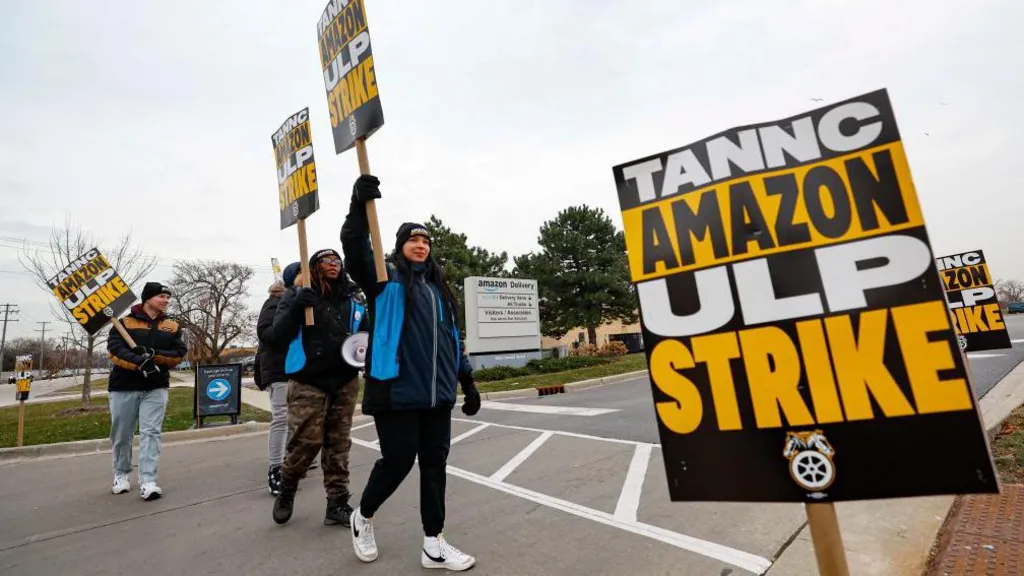
An Amazon strike has hit facilities in the United States in an effort by the Teamsters union to pressure the corporation for a labour agreement during a peak shopping season.
The Teamsters union told the Associated Press that Amazon delivery drivers at seven facilities in the United States walked off the job on Thursday after the firm failed to discuss a labour contract.
According to the union, Amazon employees in Teamsters union jackets were protesting at “hundreds” of additional Amazon facilities, which the union billed as the “largest strike” in US history involving the company.
The corporation, which employs over 800,000 people in its US delivery network, stated that its services will be unaffected.
It was unclear how many people, including members of Germany’s United Services Union, participated in Thursday’s demonstration. The Teamsters union reported that thousands of Amazon employees were implicated in the United States.
Amazon Strike at 10 Locations
Overall, the group claims to represent “nearly 10,000” Amazon strikers, having signed up thousands of people at roughly ten locations across the country, many of whom have joined in recent months.
The organization has claimed recognition from Amazon going on strike, claiming the firm illegally neglected its obligation to bargain collectively over salary and working conditions.
The Teamsters is a long-standing US union with nearly one million members. It is well-known for securing lucrative contracts for its members at companies like delivery behemoth UPS.
Most of the Teamsters’ Amazon campaigns have concerned drivers working for third-party delivery companies that partner with the tech behemoth.
Amazon denies that it is liable as an employer in those circumstances, which is a point of legal contention. In at least one case, labour officials have taken a preliminary stance in favour of the union.
Stalled Contract Negotiations
Amazon employees at a major warehouse on Staten Island in New York have also chosen to join the Teamsters. Their warehouse is the only Amazon facility in the United States where labour officials have formally recognized a union win.
However, the Amazon strike is because contract negotiations have not progressed since the 2022 vote. It was not one of the areas scheduled to go on strike on Thursday.
Amazon, one of the largest employers in the United States, has long received criticism for its working conditions and has been the target of activists seeking to gain traction among its employees.
Related News:
Amazon Releases Nova, a Fresh Set of Multimodal AI Models.
Business
Amazon Encounters Numerous Strikes As Unions Aim At The Holiday Shopping Surge.
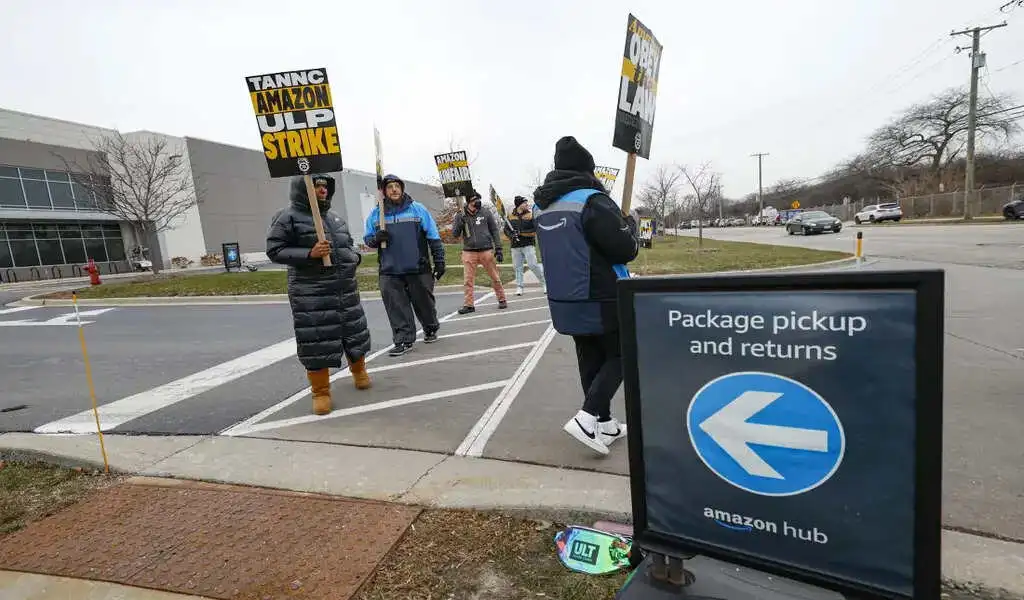
(VOR News) – Thousands of Amazon employees at various sites across the country were scheduled to go on strike on Thursday in an effort by the Teamsters union to pressure the retail behemoth to acknowledge its unionised workers in the United States.
The walkout is expected to concentrate on seven Amazon locations across the country during the holiday purchasing surge and may be the most significant union action against Amazon in the nation’s history.
The business announced on Thursday morning that there had been no effect on operations. It also stated that it is “continuing to concentrate on fulfilling customers’ holiday orders.”
The International Brotherhood of Teamsters maintains that it represents more than 10,000 Amazon employees and contractors in aviation centres, warehouses, and delivery centres.
Amazon has refused to acknowledge the union for many years.
The retail giant, which employs approximately 1.5 million individuals, excludes contractors and part-timers. A strike has been initiated by delivery couriers and warehouse employees at seven distinct locations in order to exert pressure on the company to negotiate a collective bargaining agreement that would encompass modifications to compensation, amenities, and working conditions.
Picketing was intended for New York, Atlanta, Los Angeles, San Francisco, and Skokie, Illinois.
Also, the Teamsters assert that they are establishing picket lines at “hundreds” of additional warehouses and delivery centres by encouraging non-unionized workers to picket under U.S. labour law, which protects workers’ ability to take collective action to further their interests.
“Amazon workers are exercising their power,” Randy Korgan stated to NPR.
“They now realise there is a pathway to take on a corporate giant like this – and that they hold the power.” Amazon responds by accusing the Teamsters of fabricating information regarding the strikes, asserting that the participants are “entirely” outsiders rather than employees or subcontractors of the corporation.
Amazon spokesperson Kelly Nantel stated that “the reality is that they were unable to secure sufficient support from our employees and partners and have invited external parties to harass and intimidate our team.” For more than a year, the Teamsters have been intentionally misleading the public by claiming to represent “thousands of employees and drivers.” They do not.
The Teamsters did not provide a specific duration for the strike; however, they informed NPR that it would extend beyond one day. Workers would receive $1,000 per week in strike money, as per the union.
Teamsters President Sean O’Brien issued a statement in which he stated, “If your package is delayed during the holidays, you can attribute it to Amazon’s insatiable greed.” We established a firm deadline for Amazon to attend the meeting and treat our members equitably. They disregarded it.
The Teamsters granted until December 15 to convene with its unionised employees and develop a collective bargaining agreement.
Amazon has opposed all unionisation efforts in court, asserting that unions were not advantageous to its employees and emphasising the compensation and benefits that the organisation currently provides.
Amazon has been accused of discriminatory labour practices on numerous occasions, including the termination of labour organisers. Furthermore, it has disputed its official status as a contract employer.
Teamsters organize Amazon delivery couriers and other employees.
In June, Amazon established its first unionised warehouse in Staten Island, New York, two years after making history by voting to join the fledgling Amazon Labour Union, which is also affiliated with the Teamsters.
The union is one of the most influential in the United States and Canada, with 1.3 million members. On Thursday, the German United Services Union declared that Amazon employees in Germany would participate in a strike in conjunction with their American counterparts.
In the past, Amazon has experienced demonstrations in Germany and Spain that were related to the holiday season in order to advocate for improved wages and working conditions.
“The holiday season has arrived.” Delivery is anticipated. Patricia Campos-Medina, the executive director of Cornell University’s Worker Institute, asserts that “this is the moment in which workers have control over the supply chain.”
The Teamsters have reported that Amazon’s profits have increased both during and after the pandemic. The corporation is currently valued at over $2.3 trillion, with net income of $15 billion in the most recent quarter alone. It is the second-largest private employer in the United States, following Walmart.
SOURCE: NPR
SEE ALSO:
SoftBank Is Courting Trump With a Proposal To Invest $100 Billion in AI.
TVA News Montreal Becomes Most-Watched News Source in Quebec
-
Politics4 weeks ago
Miller Expects 4.9 Million Foreigners to Leave Canada Voluntarily
-
News3 weeks ago
Nolinor Boeing 737 Crash Lands in Montreal
-
News3 weeks ago
“Shocking Video” Vancouver Police Shoot Armed Suspect 10 Times
-
Tech4 weeks ago
Increasing its Stake in OpenAI by $1.5 Billion is a Possibility for SoftBank.
-
Tech3 weeks ago
Canadian Media Firms Are Suing OpenAI in a Potential Billion-Dollar Dispute.
-
News4 weeks ago
Trudeau Called the Greatest Threat to NATO

